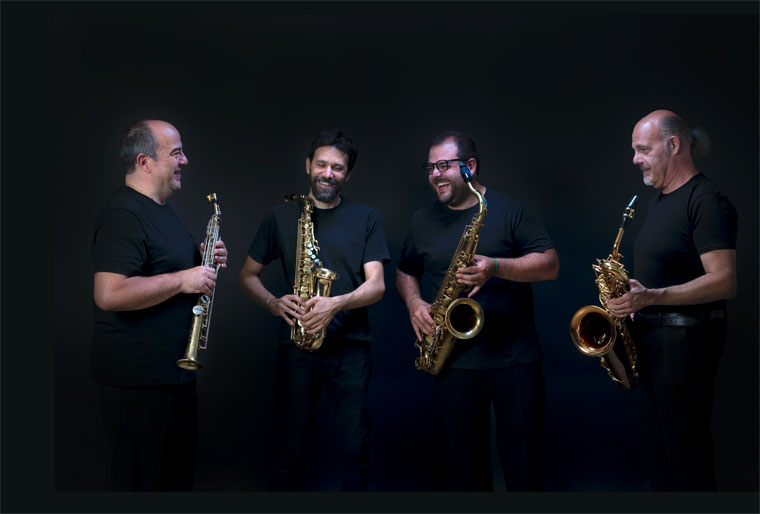duration: 13′
commission: Federico Mondelci
1st performance: Athens, Festival at Aixoni Theatre, September 23, 1993
performer: Sax – Federico Mondelci
ICMC ’97 Selection – Tessaloniki (Greece)
NEUROMANTE is a composition for amplified alto saxophonist with sampled bass saxophone and alto saxophone sounds. It was rea¬lized in the composer’s private studio with the collabora¬tion of the saxophonist, Federico Mondelci.
The basic idea behind the work is to be found in considering the various creative possibilities which can occur when a direct confrontation is set up between a live performer and a computer controlled performance.
The piece, decidedly virtuosic in character, demonstrates both the soloist’s bravura together with
the highest possible level of studio editing techniques. Rather than compromising these two different worlds of techniques the end result yields a true expansion of sonic events. The live and synthetic parts are almost always present together and often strictly intertwined, wether in melodic and rhythmic figures or with timbre or range.
The main technical challenge in the studio was to reconstruct a synthetic part which would match the saxophone’s natural phrase characteristics and at the same time create a part which amply surpasses the human limits of possible saxophone technique.
Almost all of the individual sounds were sampled separately in order to allow for complete control in freely reconstructing, using digital editing, authentic sounding melodic figures and rhythmic articulation. Only in a few instances were the almost 400 original samples altered electronically. The samples were grouped into five timbral categories: key clicks, slap tongues, staccatos, tremolos, repeated notes and multiphonics. These five groups were in turn further subdivided into 32 different programs and corresponding MIDI channels.
It is also possible to perform the tape solo without the soloist.
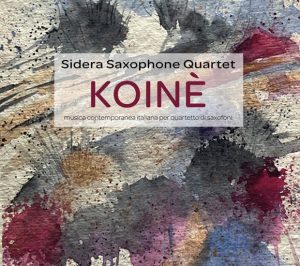
Koinè
Sidera Saxophone Quartet
Giampaolo Antongirolami, michele Bianchini, Michele Selva, Daniele Berdini
contemporary music for saxophone quartet
publisher Ema Vinci L&C
ambisonic mastering Luigi Ceccarelli
contains
Neuromante x 4 by Luigi Ceccarelli
and other pieces by Francesco Antonioni, Sylvano Bussotti, Roberto Doati, Stefano Scodanibbio, Alessandro Solbiati
available on CD and on streaming platforms Spotify, Apple Music, Youtube, Youtube Music, Amazon Music, Deezer
Top-5 2022 on Alias – Il Manifesto (Mario Gamba)
Top CD Playlist 2022 – Blow Up (Nazim Comunale)
A List of Music References 2022 – Percordi Musicali (Ettore Garzia)
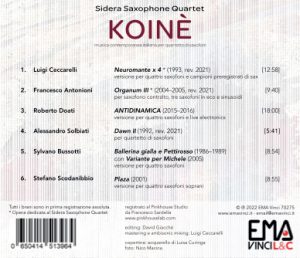
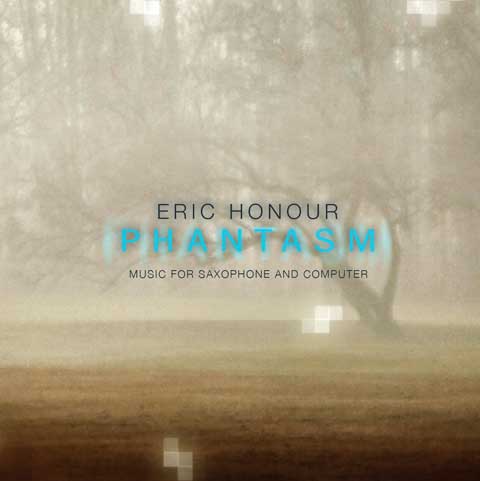
Mp3 album – Neuromante
for alto sax and sampled sounds of sax
Eric Honour alto sax
included in: Phantasm MP3 Album by Erid Honour
BUY online on iTunes
BUY online CD Universe
Review
At the Teatro degli Atti the first soloist to appear is Marco Gerboni with his alto. The work is called Neuromante (1992). Immediately Braxtonian phrasing and an initial structure for short “chapters”. After all, the procedure with truncated episodes, not traumatically, but rather in a serene way and with some hints of “solution” on a note that acts as a tonic, is one of Ceccarelli’s favorites. Neuromancer goes on, remaining there for a long time, in the exasperation and interaction of post-jazz phrases (one continues to think of Braxton), then in openings towards lyric-sidereal spaces. Throughout the length of the piece the soloist’s sounds are multiplied, surrounded, lapped, slightly contrasted by a series of “doubles” circulated by electronic devices. Why “doubles”? Because they are sampled sounds of the whole family from saxes with a privilege given to the low registers.
Mario Gamba – Il Manifesto – October 6, 2007
performances of “Neuromante” for saxophone quartet and electronics
Oct 27, 2022 – Ancona, XXIII CIM Colloquio di Informatica Musicale, Auditorium of Sala Vanvitelliana – sax Sidera Saxophone Quartet
Dec 22, 2023 – Roma, 60th Festival di Nuova Consonanza, Mattatoio La Pelanda – sax Sidera Saxophone Quartet
performances of “Neuromante” for alto sax and electronics
Sep 23, 93 – Athens (Gr), Festival at Aixoni Theatre – sax Federico Mondelci
Dec 03, 93 – Milan (Ita), X Convegno Informatica Musicale, Auditorium Lattuada – sax Federico Mondelci
Dec 14, 93 – Roma (Ita), Festival Musica Verticale, Sala 1- sax Federico Mondelci
Jun 05, 94 – L ‘Aquila (Ita), chiesa di S. Caterina, Incontro Naz. Musica Elettronica – sax Federico Mondelci
Sep 26, 97 – Thessaloniky (Gr), International Computer Music Conference – sax Steven Duke
Nov 03, 97 – University of Winsconsin-Madison (USA), Guest Artist Series – sax Steven Duke
Feb 26, 98 – Northern Illinois University (USA), Faculty Recital Series – sax Steven Duke
Nov 09, 99 – North Carolina University, USA, Stewart Theatre, Arts Now Series – sax Steven Duke
Jun 03, 03 – Bruxelles (Bel), Festival Musiques et Recherches, Chapelle de Boondael
Sep 25,07 – Rimini (Ita), Sagra Musicale Malatestiana, Teatro degli Atti – sax Marco Gerboni
Mar 09, 09 – Thessaloniky (Greece), University of Macedonia-Thessalonica – sax – Eric Honour
Mar 14, 09 – Wien (Austria), Essl Museum – sax – Eric Honour
Mar 17, 09 – Lucca (Ita), Auditorium del Suffragio, Istituto Boccherini – sax – Eric Honour
Mar 18, 09 – Perugia (Ita), Auditorium del Conservatorio – sax – Eric Honour
Mar 20, 09 – Huddersfield (UK), Paul’s Hall, University of Huddersfield – sax – Eric Honour
Mar 26, 09 – CUNY Brooklyn, NY (USA), Brooklyn College – sax – Eric Honour
Mar 28, 09 – Rindge NH (USA), Franklin Pierce University – sax – Eric Honour
Apr 01, 09 – Alva OK (USA), Northwestern Oklahoma State University – sax – Eric Honour
Apr 02, 09 – Santa Fe, NM (USA), SCI National Conference, College of Santa Fe – sax Eric Honour
Apr 06, 09 – Kansas City, MO (USA), Grant Hall, University of Missouri-Kansas City – sax – Eric Honour
Apr 09, 09 – Oshkosh, WI (USA), University of Wisconsin-Oshkosh – sax – Eric Honour
Apr 16, 09 – Minneapolis, MN (USA), Intermedia Arts – sax – Eric Honour
Apr 17, 09 – Minneapolis, MN (USA), St. Olaf Catholic Church – sax – Eric Honour
Apr 19, 09 – Evanston, IL (USA), Lutkin Hall, Northwestern University – sax – Eric Honour
Apr 30, 09 – Bellingham, WA (USA), Western Washington University – sax – Eric Honour
May 03, 09 – Warrensburg, MO (USA), Hart Recital Hall, University of Central Missouri – sax – Eric Honour
Apr 22, 13 – Milano (Ita), Auditorium San Fedele – Musiche a 4 DImensioni – sax- Mario Marzi
May 04, 13 – Perugia (Ita), Conservatorio di Musica – sax – Michele Bianchini
Oct 22, 13 – Warrensburg, Missouri (USA), University of Central Missouri – sax Eric Honour
May 22, 17 – Latina (Ita), Conservatory of Music, Festival “Nuove Forme del Suono” – sax Simone Vecciarelli
Oct 31, 23 – Fermo (Italy), G. B. Pergolesi Conservatory, Auditorium Billè – sax Giampaolo Antongirolami
May 21, 24 – Berlin (Germany), Unerhorte Musik, sax Michele Bianchini
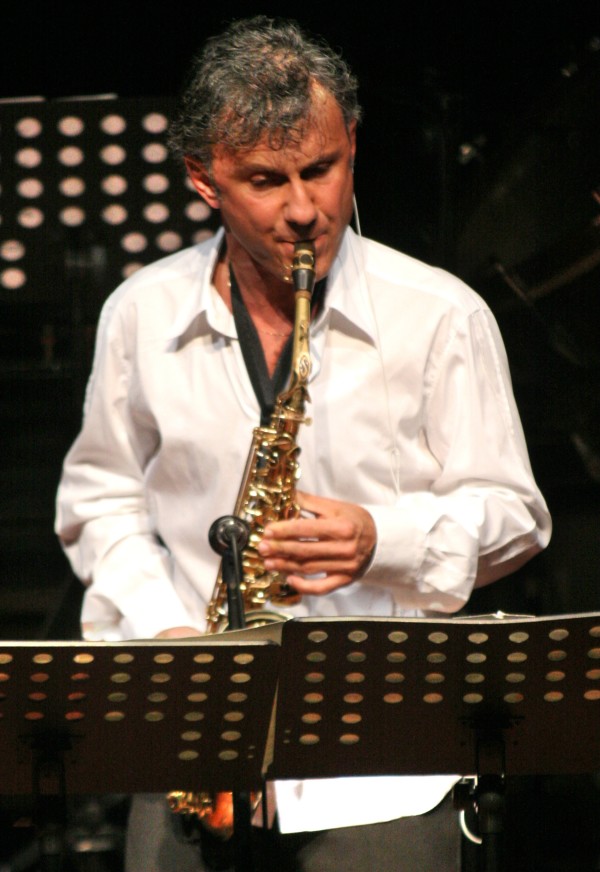
Description of the form
The piece is divided into five sections according to the scheme A, B, A ‘, C, A “. Sections A are made up of several melodic lines (one live and others synthetic) which vary from one to five. All follow approximately the same same sinuous course. These three sections are differentiated above all by the register in which the alto sax plays: the first part is written mainly in the low register, the second in the medium register,
while in the final of the piece the very high register is reached.
In sections B and C the relationship between live sound and synthetic sound is less tight. Section B has the character of a continuous sound band and is made up of overlapping tremolos, blown backs and key strokes that form a dense, changing harmonic agglomerate.
In this section the soloist has a very free tremoli part.
Section C is made only with very short sounds. The synthetic part is composed of a rhythmic texture of slap (reed strokes) of the bass sax: up to eight simple rhythmic lines, slightly out of phase with each other with a different metronomic speed in order to form a very complex and gradually variable rhythmic pattern.
Technical realization
The main challenge in the realization of the synthetic part in the studio was to reconstruct a saxophone character with sampled sounds that was credible and at the same time that far exceeded the technical possibilities of the instrumentalist.
This result was achieved thanks to a work that in every phase (recording, organization of the samples and realization of the sequences) has always maintained a high degree of sound quality.
For the digital recording of the sounds of Federico Mondelci’s saxophones, two Neuman U87 microphones were used, placed very close to the instruments in order to record the noises of the mechanics and the breath of the performer, components that play a significant role in this piece. From the recording, about 400 different sounds were subsequently selected and resampled, which were then organized into 32 programs and stored in two samplers.
To be able to freely reconstruct the melodic-rhythmic
articulation with digital editing, the sounds were all sampled individually. The tremolos, the ribattuti and the multiphonic sounds held, which last a few seconds, are an exception. This choice was made to be able to control the reconstruction of musical phrases and, while always trying to maintain a close analogy with the expressive quality of live performance, to overcome the technical limits of mechanical instruments, especially for the speed and clarity of the articulation.
The organization of the samples was made according to five different timbral types: key sounds, slap, detached, tremoli, repeated and multiphonics. The 32 programs have been assigned to as many MIDI channels and each program contains a different timbre that reproduces the full range of the real instrument.
Generally an attempt has been made to maintain the recognizability of the original sound as much as possible without electronically altering the digital signal.
Only some tremolos were lowered by one or more octaves to achieve a drone function. Some slaps were also doubled in speed and then raised an octave.
The project of the score and the sequence of the samples was carried out with a sequencer on an Atari computer.
In organizing the sound sequences, various measures have been adopted to obtain a more naturalistic result: In sections A, an independent sequence has been created, parallel to the melodic sequences, for the noise of the keys. This trick, in addition to making the overall effect more real, allows you to accentuate the precision of the rhythmic articulation more or less independently of the other sounds, simply by varying the intensity of the key strokes. which serve to accentuate the character of the performance of the phrases, as it actually happens in a live performance. Generally there is a small acceleration in the dynamic crescendo and a slowdown in the decrescendo and ending of each sentence.

